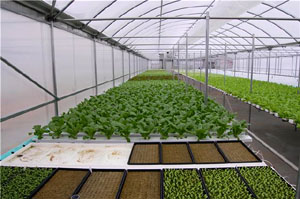Posted by · Leave a Comment
Over the years, we’ve grown hundreds and hundreds of tomato plants.
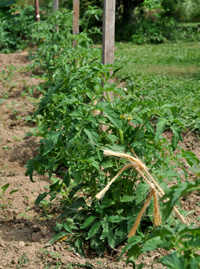
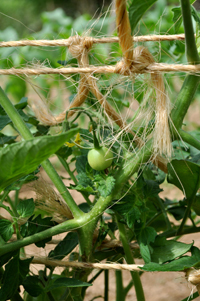 It all begins innocently enough: nothing beats the sweet smell of a little tomato plant on one of your first trips to the greenhouse in Spring (we just don’t bother to start tomato plants by seed—just a preference).
It all begins innocently enough: nothing beats the sweet smell of a little tomato plant on one of your first trips to the greenhouse in Spring (we just don’t bother to start tomato plants by seed—just a preference).
The thick, sticky little leaves…the bright green signaling the approaching summer…the visions of bulbous, red orbs packed into quart jars. Before you know it, you’ve got a row of 50 tomato plants. Cute, right? Until they’re waist-high, uprooting the tomato cages that were, at one time, way too big for the tiny plant.
Staking tomato plants. You name it; we’ve tried it.
This year, we’re going with the “Florida Weave.”
David has hammered wooden stakes 12 inches into the ground between every other tomato plant. The twine you use should be resistant to weather (obviously) and “grip” the stakes. We’re using baler twine.
Begin your twine about a foot off the ground, wrapping around the end stake and continue down the row “weaving” between plants—the object being the course of a figure 8 in twine supporting your plants. It’s recommended the figure 8 support is necessary only on the first level. From then on, you can just run straight down the row, attaching to stakes.
Many thanks to our friends at the Penn State Cooperative Extension website for posting this and many other helpful suggestions. Remember, there is a wealth of information available through your Cooperative Extension offices and websites!

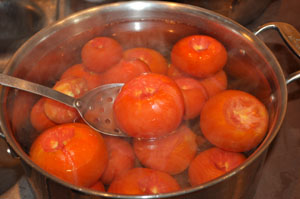
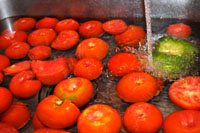 I needed it to fill out the weight of the tomatoes required in my barbeque sauce recipe. No one will ever know; shhhhh! Don’t tell…
I needed it to fill out the weight of the tomatoes required in my barbeque sauce recipe. No one will ever know; shhhhh! Don’t tell…